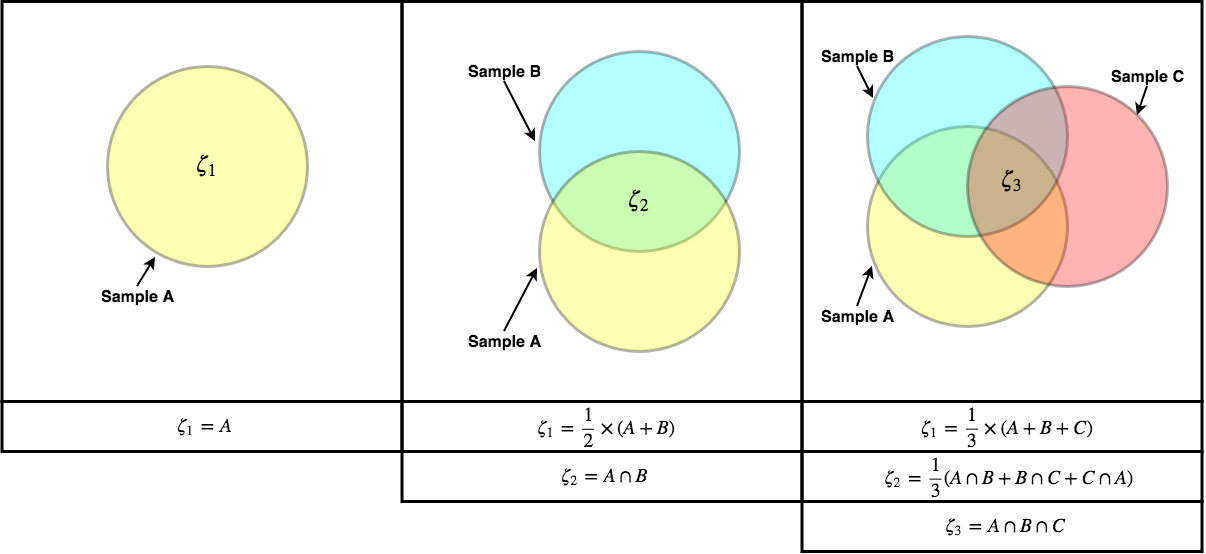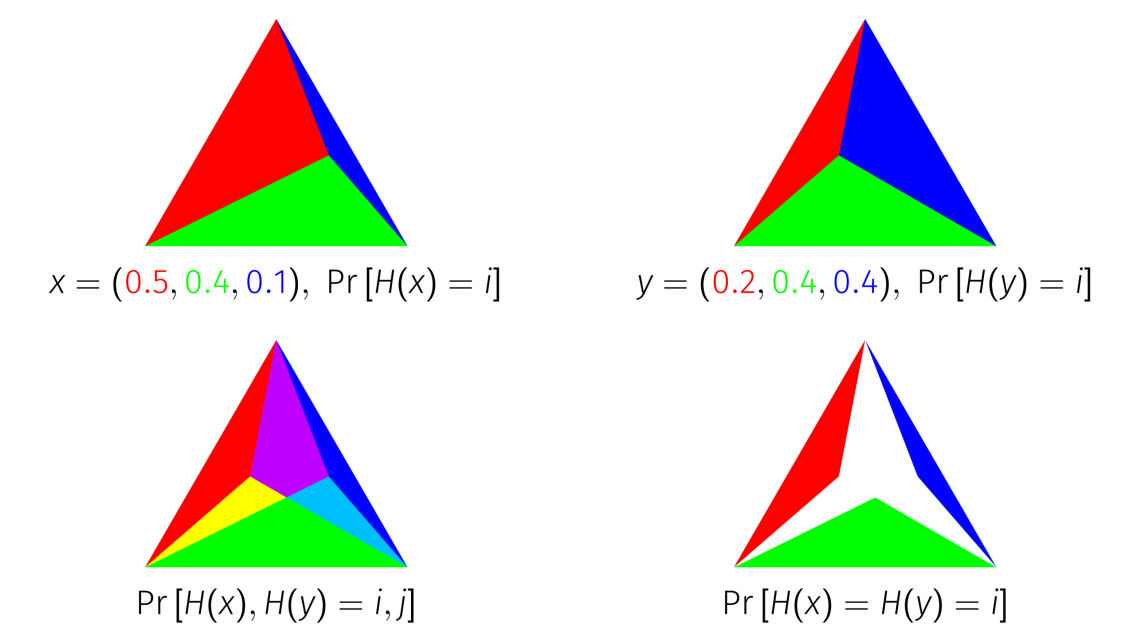|
Zeta Diversity
In ecology, zeta diversity (ζ-diversity), first described in 2014, measures the degree of overlap in the type of taxa present between a set of observed communities. It was developed to provide a more generalized framework for describing various measures of diversity, and can also be used to test various hypotheses pertaining to biogeography. Zeta diversity as an extension of other measures of diversity α-diversity The most basic measure of community diversity, alpha diversity (α-diversity), can be described as the average number of distinct taxonomic groups (e.g. unique genera or operational taxonomic unit) present, independent of their abundances, on a per sample basis. In the ζ-diversity framework this can be described as ζ1, the number of unique taxa present in one sample. β-diversity Beta diversity (β-diversity) is a measure to allow for a comparison between the diversity of local communities (α-diversity). The greater the similarity in community composition betw ... [...More Info...] [...Related Items...] OR: [Wikipedia] [Google] [Baidu] |
Ecology
Ecology () is the study of the relationships between living organisms, including humans, and their physical environment. Ecology considers organisms at the individual, population, community, ecosystem, and biosphere level. Ecology overlaps with the closely related sciences of biogeography, evolutionary biology, genetics, ethology, and natural history. Ecology is a branch of biology, and it is not synonymous with environmentalism. Among other things, ecology is the study of: * The abundance, biomass, and distribution of organisms in the context of the environment * Life processes, antifragility, interactions, and adaptations * The movement of materials and energy through living communities * The successional development of ecosystems * Cooperation, competition, and predation within and between species * Patterns of biodiversity and its effect on ecosystem processes Ecology has practical applications in conservation biology, wetland management, natural resource managemen ... [...More Info...] [...Related Items...] OR: [Wikipedia] [Google] [Baidu] |
Alpha Diversity
In ecology, alpha diversity (α-diversity) is the mean species diversity in a site at a local scale. The term was introduced by R. H. WhittakerWhittaker, R. H. (1960) Vegetation of the Siskiyou Mountains, Oregon and California. Ecological Monographs, 30, 279–338. Whittaker, R. H. (1972). Evolution and Measurement of Species Diversity. Taxon, 21, 213-251. together with the terms beta diversity (β-diversity) and gamma diversity (γ-diversity). Whittaker's idea was that the total species diversity in a landscape (gamma diversity) is determined by two different things, the mean species diversity in sites at a more local scale (alpha diversity) and the differentiation among those sites (beta diversity). Scale considerations Both the area or landscape of interest and the sites within it may be of very different sizes in different situations, and no consensus has been reached on what spatial scales are appropriate to quantify alpha diversity. It has therefore been proposed that the de ... [...More Info...] [...Related Items...] OR: [Wikipedia] [Google] [Baidu] |
Genera
Genus ( plural genera ) is a taxonomic rank used in the biological classification of living and fossil organisms as well as viruses. In the hierarchy of biological classification, genus comes above species and below family. In binomial nomenclature, the genus name forms the first part of the binomial species name for each species within the genus. :E.g. ''Panthera leo'' (lion) and ''Panthera onca'' (jaguar) are two species within the genus '' Panthera''. ''Panthera'' is a genus within the family Felidae. The composition of a genus is determined by taxonomists. The standards for genus classification are not strictly codified, so different authorities often produce different classifications for genera. There are some general practices used, however, including the idea that a newly defined genus should fulfill these three criteria to be descriptively useful: # monophyly – all descendants of an ancestral taxon are grouped together (i.e. phylogenetic analysis should clearly demons ... [...More Info...] [...Related Items...] OR: [Wikipedia] [Google] [Baidu] |
Operational Taxonomic Unit
An Operational Taxonomic Unit (OTU) is an operational definition used to classify groups of closely related individuals. The term was originally introduced in 1963 by Robert R. Sokal and Peter H. A. Sneath in the context of numerical taxonomy, where an "Operational Taxonomic Unit" is simply the group of organisms currently being studied. In this sense, an OTU is a pragmatic definition to group individuals by similarity, equivalent to but not necessarily in line with classical Linnaean taxonomy or modern evolutionary taxonomy. Nowadays, however, the term "OTU" is commonly used in a different context and refers to clusters of (uncultivated or unknown) organisms, grouped by DNA sequence similarity of a specific taxonomic marker gene (originally coined as mOTU; molecular OTU). In other words, OTUs are pragmatic proxies for "species" (microbial or metazoan) at different taxonomic levels, in the absence of traditional systems of biological classification as are available for macroscopi ... [...More Info...] [...Related Items...] OR: [Wikipedia] [Google] [Baidu] |
Beta Diversity
Beta (, ; uppercase , lowercase , or cursive ; grc, βῆτα, bē̂ta or ell, βήτα, víta) is the second letter of the Greek alphabet. In the system of Greek numerals, it has a value of 2. In Modern Greek, it represents the voiced labiodental fricative while in borrowed words is instead commonly transcribed as μπ. Letters that arose from beta include the Roman letter and the Cyrillic letters and . Name Like the names of most other Greek letters, the name of beta was adopted from the acrophonic name of the corresponding letter in Phoenician, which was the common Semitic word ''*bait'' ('house'). In Greek, the name was ''bêta'', pronounced in Ancient Greek. It is spelled βήτα in modern monotonic orthography and pronounced . History The letter beta was derived from the Phoenician letter beth . Uses Algebraic numerals In the system of Greek numerals, beta has a value of 2. Such use is denoted by a number mark: Β′. Computing Finance Beta is used i ... [...More Info...] [...Related Items...] OR: [Wikipedia] [Google] [Baidu] |
Jaccard Index
The Jaccard index, also known as the Jaccard similarity coefficient, is a statistic used for gauging the similarity and diversity of sample sets. It was developed by Grove Karl Gilbert in 1884 as his ratio of verification (v) and now is frequently referred to as the Critical Success Index in meteorology. It was later developed independently by Paul Jaccard, originally giving the French name ''coefficient de communauté'', and independently formulated again by T. Tanimoto. Thus, the Tanimoto index or Tanimoto coefficient are also used in some fields. However, they are identical in generally taking the ratio of Intersection over Union. The Jaccard coefficient measures similarity between finite sample sets, and is defined as the size of the intersection divided by the size of the union of the sample sets: : J(A,B) = = . Note that by design, 0\le J(A,B)\le 1. If ''A'' intersection ''B'' is empty, then ''J''(''A'',''B'') = 0. The Jaccard coefficient is widely used in c ... [...More Info...] [...Related Items...] OR: [Wikipedia] [Google] [Baidu] |

.jpg)


